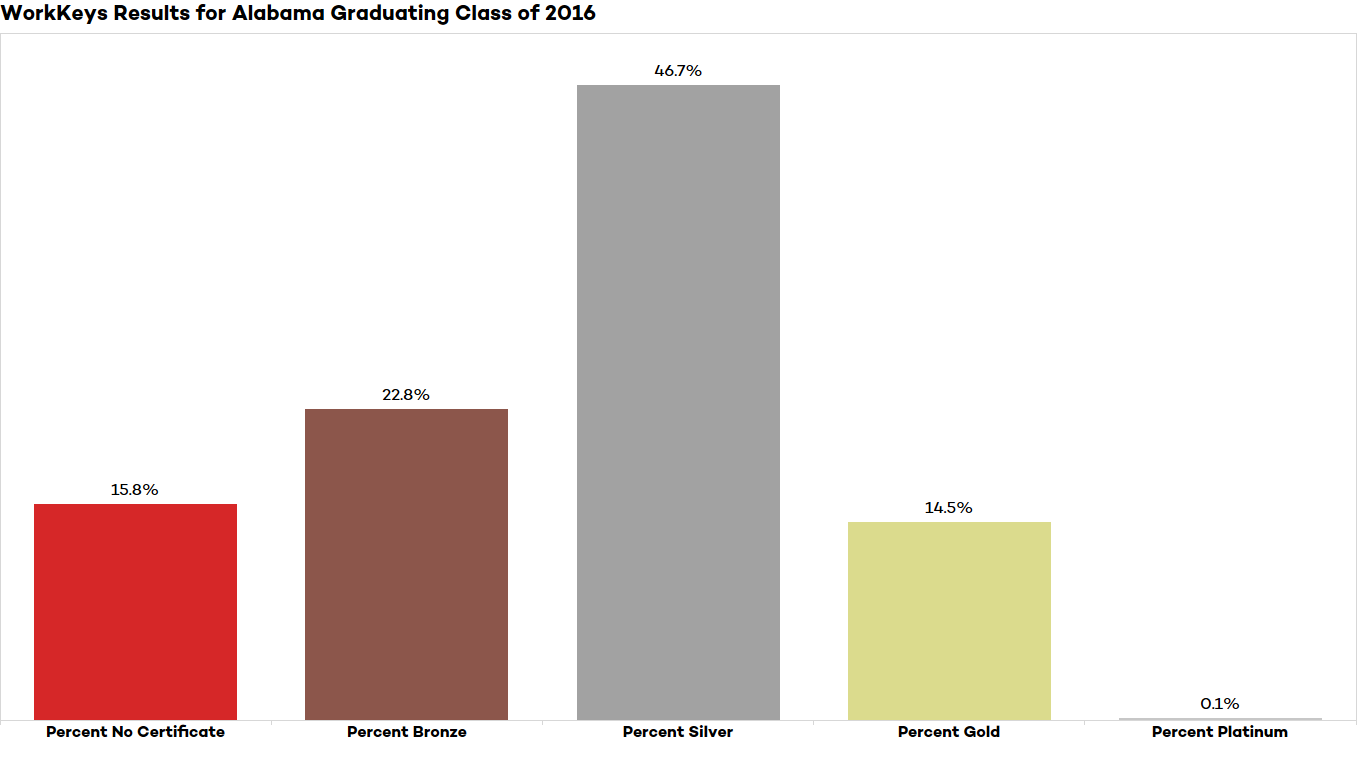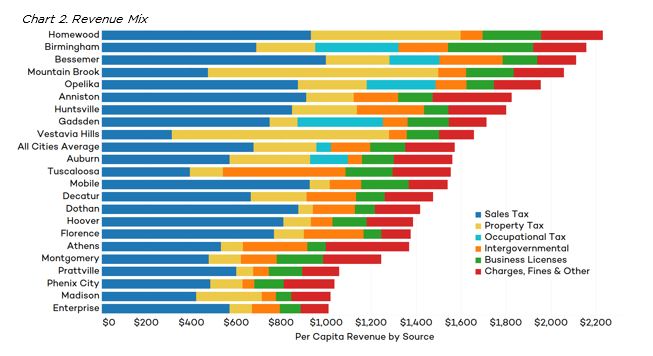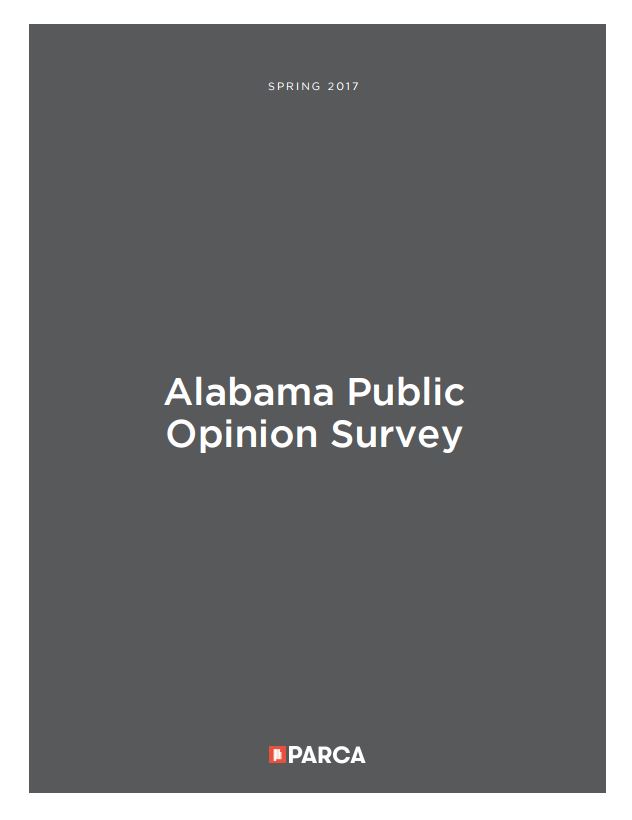
Just over 60 percent of Alabama’s 2016 high school graduates scored “workforce ready” in 2016, according to new results from ACT’s WorkKeys assessment. The Class of 2016’s success rate, 61.3 percent, improves on the 60.8 percent rate for the Class of 2015. And because a greater number of students took the test in 2016, the Class of 2016 produced more workforce ready graduates: 28,717 compared to 2015’s total of 25,453, netting an increase of 3,264 graduates earning Silver level or above workforce credentials.
This is the second year that all high school seniors were offered the WorkKeys assessment, a battery of tests designed to determine whether students can demonstrate the skills they’ll need to enter the workforce. ACT WorkKeys assessments have been used for more than two decades by job seekers, employees, employers, students, educators, administrators, and workforce and economic developers. The assessments are designed to measure both cognitive (“hard”) and noncognitive (“soft”) skills tests. Alabama students take the Applied Mathematics, Reading for Information, and Locating Information tests. Based on the scores attained on the three assessments, students may be eligible to earn a Bronze, Silver, Gold, or Platinum Certificate.
Statewide, 61.3 percent of high school graduates earned a Silver level WorkKeys certificate or higher; 47 percent reached the Silver level and 15 percent earned a Gold certificate. Less than 1 percent earned a Platinum Level Certificate. Of the students tested, 23 percent earned a bronze level certification and 16 percent didn’t score high enough to obtain a credential.
The WorkKeys test was developed by ACT, the same company that offers the ACT, the widely-known test of college readiness. When comparing school system performance on WorkKeys to results from the ACT, there are some differences in performance. For instance, the top scoring system on WorkKeys was Arab City, where 91 percent of graduates scored Silver or above. Arab ranked 10th in the state on the ACT in the percentage of students who met all benchmarks for college readiness (30 percent). Hartselle City ranked third in the state in the percentage of students scoring Silver or above (86 percent) on WorkKeys, but ranked 7th on ACT performance (33 percent of students meeting all college-ready benchmarks). Homewood City Schools was third in the state in the percentage of students earning all college-ready benchmarks on the ACT (46 percent) but was 14th on WorkKeys success (79 percent).
The content of the test was developed using a similar approach to the ACT. ACT surveyed employers to develop a catalog of the foundational skills needed to succeed in the workplace, across industries and occupations. ACT then developed a test to measure whether prospective employees or, in this case, high school students, had those necessary skills to perform in the nearly 20,000 occupations ACT evaluated. The results can be provided to employers to demonstrate that a job applicant has the skills needed for workplace success. Using the results, students should be able to determine their skill levels, identify skills needing improvement, and match the measured skill levels to specific job requirements.
Those scoring at the Platinum Level have demonstrated the skills needed for 99 percent of the occupations in the ACT jobs dataset. Those earning a Gold level certificate should be ready for 93 percent of jobs in the database. Scoring at the Silver level indicates a candidate has the skills necessary to succeed in 67 percent of jobs in the ACT database. Those earning a bronze certificate are judged to be ready for 16 percent of jobs.
Additional information for understanding WorkKey’s scores can be found on ACT’s website, including this guide to understanding your scores.
When the state’s strategic plan for education, Plan 2020, was adopted by the State Board of Education, the board set a goal of achieving a 90 percent graduation rate.
At the same time, it set a goal of having all those graduates ready for college and career. Earning a Silver WorkKeys certificate or higher is one way a student can be judged as college and career ready. Graduates can also demonstrate college and career readiness by:
- Scoring at or above the college readiness benchmark on one of the tested subjects on the ACT
- Earning a passing score (3 or above) on an Advanced Placement or International Baccalaureate exam
- Receiving an industry-recognized credential recognized in the appropriate business sector
- Earning college credit through dual enrollment at a two-year college or university
- Successfully enlisting in the U.S. military.
You can explore the results for Alabama’s public schools and systems in the interactive charts below.
Click here to print.



